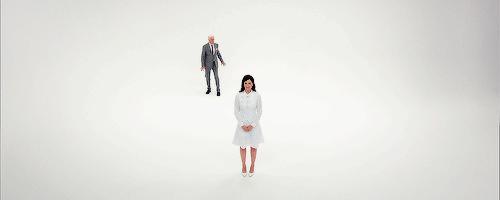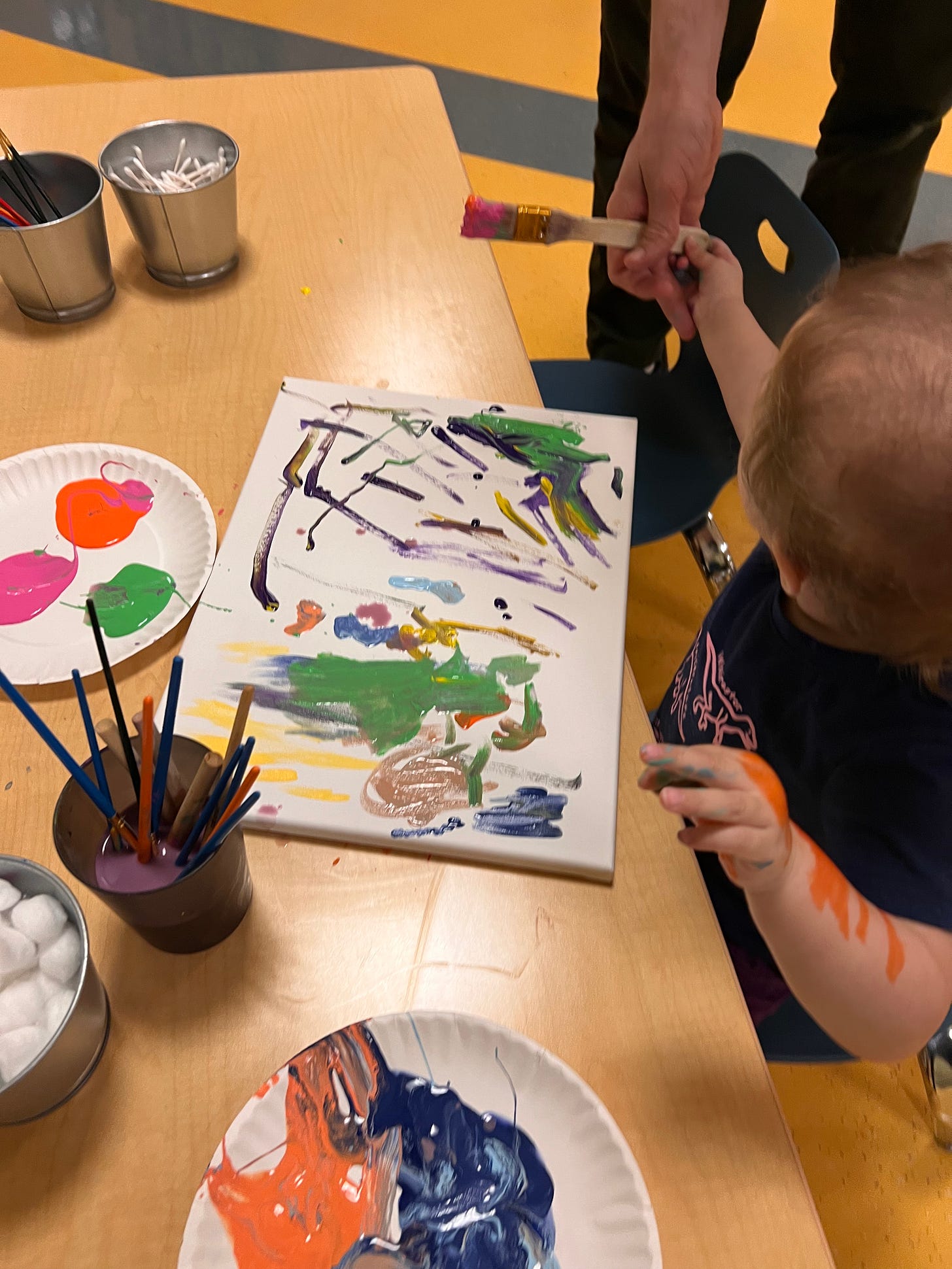Making in the Margins
a metaphor I don't know what to do with

Dear Friend,
There’s an idea, a phrase, a metaphor, that assers that when life is full, that we must “write in the margins”.
I’m going to think aloud with you about what this metaphor might mean.
In my early twenties, I read “Pilgrim at Tinker Creek” for the first time. I bought a highly marked up copy from Websters cafe and started to read it. I used a thick blue pen and added my own notes to the marginalia. I took that book everywhere, in conversation with the mysterious person who held it before me and in conversation with myself and in conversation with Annie Dillard who was in turn in conversation with a mink staring at her from a the bank of Tinker Creek.
I gave that book to my friend Alissa who was studying environmental engineering. I sent it to her address in Illinois after I told her about the book. I imagined her reading it with my notes in the margins, the one’s before mine, and adding her own, a layered conversation of time and attention. We lost touch. She didn’t send it back. I haven’t bought a replacement. The object is lost to me and the marginalia also gone.
also see: this substack obsessed with marginalia and note taking
also see: the Marginalia by Maria Popova (previously Brain Pickings, I like this new name much better).
I don’t know that time has margins. Time just is. Time moves. It paces itself according to its whims against the aging of our bodies and, more slowly I pray, our minds.
I don’t know how to make on the edges of a different life all together. I don’t know what to make of this metaphor.
I don’t have margins. I have open time or I do not. I don’t have pockets of time folded like a receipt and shoved in my wallet waiting for me to unfold it and use it like a stolen kiss.
Even when the time is open, my mind and body aren’t necessarily ready for the effort. For the sheer will and clarity that is required to even know what to make. I’m tired. I have time. Time is not what I lack. What I lack is capacity. Energy. The recovery space (not time) required after a four hour allergy appointment with a grumpy toddler. The cost to my chronic illness energy bank when I don’t sleep well or catch another cold.
My friend Elaine has a show at Susquehanna Art Museum in June. I’m so excited for her because I love her art—it makes me feel things, all the things, angry sad hopeful inspired grief-y pained inspired (I siad that already). Her artist statement, that she let me read ahead of time, talked about the fragmented nature of the work—literally made of paper fragments sewn together—that reflects the fragmented nature of care work and art making amdist the care work—”making in the margins” as she said.
How my friend? How?
I want to ask. For being my friend, long stretches of time to discuss this issue do not appear before us. Her two kids and attending illnesses and chronic illnesses. My own. The disjointed nature of childhood development that’s put our kids on different nap schedules for most of last year. How do we do this? How?
In the margins has a kind of cultural recognition. We know what it means. I think. But it is also vague in its realities—similar to the unspoken universe of mundane desperation behind the words “We moved back to be near family”, which is what I say when I explain why we moved to Pennsylvania.
“We had a kid and family is helpful.”
People nod as if they know. But I know they don’t know because I used to nod knowingly as if I knew what it meant when people said this to me and I DID NOT KNOW. I did not know what it was like to try and get an infant through to toddlerhood, surviving the childhood illnesses, navigate a forever altered and (frankly) damaged body, with only one other adult to help me in and out of physical catastrophe.
The first time I really felt the absence of family, Robbie and I were so sick from a virus Pippin gave us from daycare that we couldn’t stand up. We could hear Pippin crying in the next room and couldn’t get to her for more than a second.
My mother drove 4hrs round trip to rescue Pippin. I’d never been away from her overnight before. I put her in the car and watched it pull away and wept in the front yard. A neighbor friend brought me gatorade a few minutes later; checked if I was okay. Yeah. Just didn’t mean to leave her overnight being sick.
Now, Pippin gets overnights with her Grammy all the time. It’s this mental and emotional relief. The margins are less marginal, more breathing room around the central text that doesn’t need scribbles in the negative space.
Maybe it is more accurate to say that I know exactly what a margin is and what people imagine I could do with it. But what I don’ t know if how to start making when the margin presents itself.
How does one even have the energy to decide on a thing to make? HOW IS THIS DONE?
I can sit for hours unable to decide or move. I call it my Blank Room. It’s been happening more in the last few months. A trauma response? A stress response? An odd brain wiring? I can have all the open space and none of the ability to CHOOSE A TASK. If I haven’t chosen my next activity the day prior, I flounder.
It looks like Void from the Good Place.
Very empty in there. Not a lot to latch onto. Maybe even less gravity than Janet seems to enjoy in this image.
What am I supposed to do with this? Is this blank room a margin? Or too much margin?
Writing in margins also suggests an intensity of activity that pushes writing to the side.
But that would mean writing still happens in intense seasons.
I’ve never been to write in seasons of pressure or great change. I didn’t write when I lived in Northeast Bulgaria by myself for a year, making do with the light acquaintances, other American teachers, calls to my at home bf, and the kindness of handful of students. I had more free time than anyone should ever have. I did what I could with it and what it was was not writing. I wondered if I was ever a writer to begin with. I put my creative work into designing lesson plans that would ultimately be cause for considering relocating me or terminating my teaching position (still don’t know how we got there from my lesson plans but oh well).
Instead, I spent my open time studying for the GREs. I decided I needed them for a hypothetical “next step”. I spent more time relearning test math than I did crafting thought son a page that first year. The only real writing I did was some light blogging and an essay I wrote only as an application to graduate school.
And letters. I wrote so many letters to Robbie that year. Hundreds of pages of the mundanity of life and how much I missed him. We laugh now at how he never wrote back, or not often. How the long distance wore on him harder because I was missing from a geography we used to share and I lived on in a geography we’d never shared. Almost didn’t make it. And now we love a little human who shares 50% of our dnas. Life is mysterious.
Letters are perhaps the most marginalia of life’s margins. They are not meant to be permanent or public. They are the small and petty; they are beside the point, rarely the plot itself.
What I think people tend to mean is that when life is full, we must make in scraps of time (scraps = another metaphor), not in long stretches of focused labor. We must make in our phone apps while the gas pumps into the car that inevitably went to empty on the way to pick up a kid from daycare. We must cut our fabric while children are asleep.
Elizabeth Gilbert describes it as having an affair. We sneak around. We make time out of nothing. We illicitly abandon needs in favor of time with this intoxicating Other—in this case, our work.
Glennon Doyle once said she doesn’t watch tv so she could write before her kids get up.
And… yes. I know this. I know that to make around the demands of life is to keep making when conditions aren’t quite right, when there is less time than is needed.
But it also feels… impossible? Too much to ask? A metaphor I can’t make into a choice about my day?
I don’t really know what to make of this thing my brain doesn’t seem to want to do. I wish there was a different metaphor for making when the demands are are. But also I’m in my 30s and realizing that the demands just get steeper, no plateau incoming to catch my breath.
Things I’m Loving
The Buccaneers on AppleTV. This show is CRIMINALLY underwatched and undercelebrated. Quintessence of the following vibes: Bridgerton, The Gilded Age, Dickinson, Marie Antoinette. Blessings to the poet Emma Sedlak for insisting I watch this.
3Body Problem on Netflix. I’m invested but also irritated by its refusal to commit to a moral physics. Still working out how to explain what I mean by that or if that’s actually a thing. Finale still to go.
Spontaneously going to events and making friends.
Meeting people in person when I’ve only known them through zoom.
This tarot deck my sister let me borrow and then I purchased.
How much this kid loves paint. She sat at the
canvas for 30 minutes and made it a muddy puddle.
No more medical procedures scheduled in the near future.
My friend Obi’s piece in Comment on photography and violence.
This incredible conversation with Ada Limon on poetry. I loved this moment especially: “Poetry is working when your mind wanders. That’s good! You can always read the poem again later!” (ps. Vibe Check is my only comfort after Vulture cancelled Into It with Sam Sanders. RIP my favorite pod).
Did I weep through the new Blue episode? I did. Can you tell I moved when I was 9yo and still feel her grief? Yep.
Scheming the launch of CreativeMornings Harrisburg. Looking at August or September! If you know people in Central PA who want to make a gathering that is all hospitality, welcome, and creative inspiration, send them my way.






